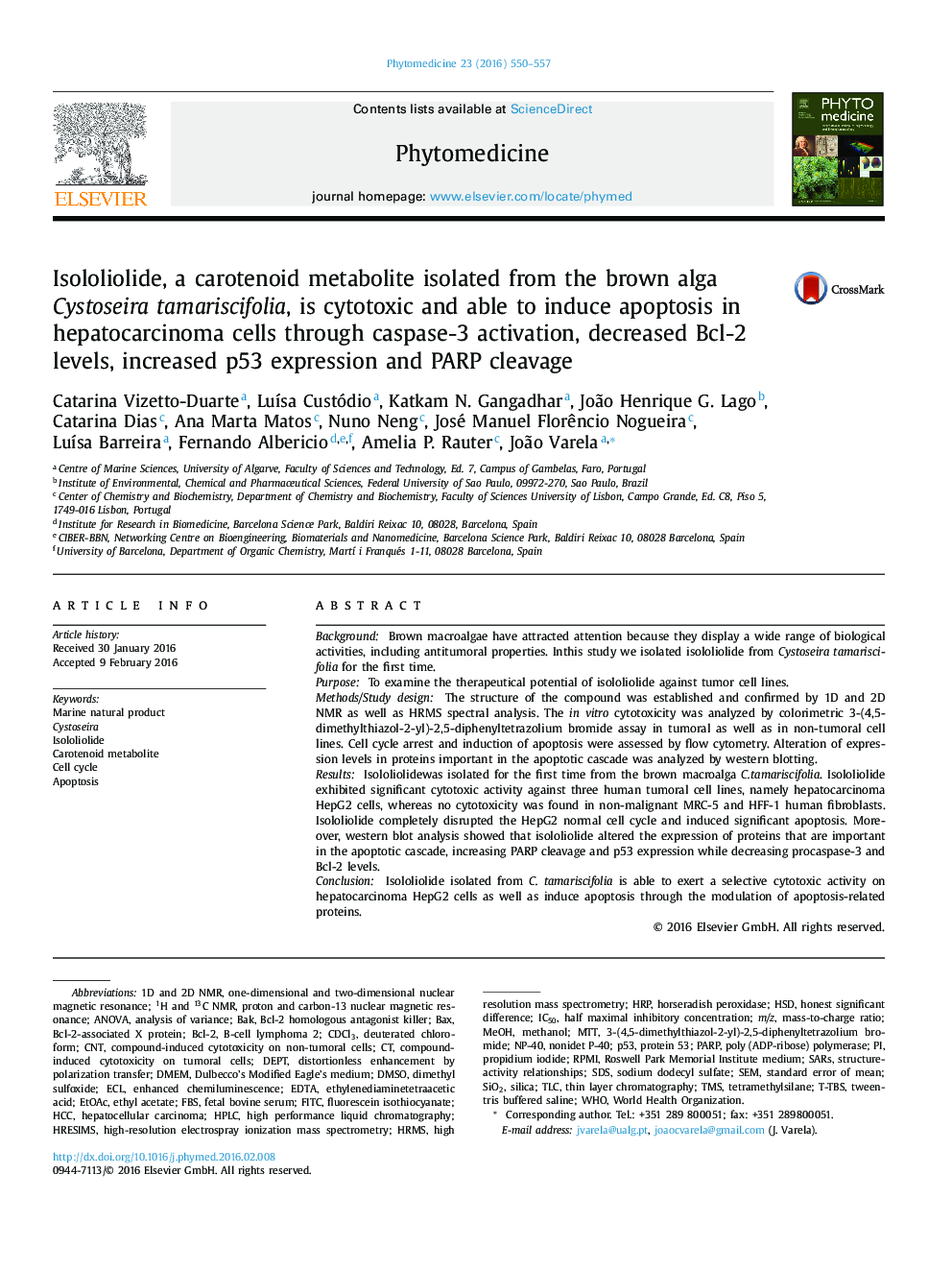| Article ID | Journal | Published Year | Pages | File Type |
|---|---|---|---|---|
| 2496261 | Phytomedicine | 2016 | 8 Pages |
BackgroundBrown macroalgae have attracted attention because they display a wide range of biological activities, including antitumoral properties. Inthis study we isolated isololiolide from Cystoseira tamariscifolia for the first time.PurposeTo examine the therapeutical potential of isololiolide against tumor cell lines.Methods/Study designThe structure of the compound was established and confirmed by 1D and 2D NMR as well as HRMS spectral analysis. The in vitro cytotoxicity was analyzed by colorimetric 3-(4,5-dimethylthiazol-2-yl)-2,5-diphenyltetrazolium bromide assay in tumoral as well as in non-tumoral cell lines. Cell cycle arrest and induction of apoptosis were assessed by flow cytometry. Alteration of expression levels in proteins important in the apoptotic cascade was analyzed by western blotting.ResultsIsololiolidewas isolated for the first time from the brown macroalga C.tamariscifolia. Isololiolide exhibited significant cytotoxic activity against three human tumoral cell lines, namely hepatocarcinoma HepG2 cells, whereas no cytotoxicity was found in non-malignant MRC-5 and HFF-1 human fibroblasts. Isololiolide completely disrupted the HepG2 normal cell cycle and induced significant apoptosis. Moreover, western blot analysis showed that isololiolide altered the expression of proteins that are important in the apoptotic cascade, increasing PARP cleavage and p53 expression while decreasing procaspase-3 and Bcl-2 levels.ConclusionIsololiolide isolated from C. tamariscifolia is able to exert a selective cytotoxic activity on hepatocarcinoma HepG2 cells as well as induce apoptosis through the modulation of apoptosis-related proteins.
Graphical abstractFigure optionsDownload full-size imageDownload high-quality image (189 K)Download as PowerPoint slide
